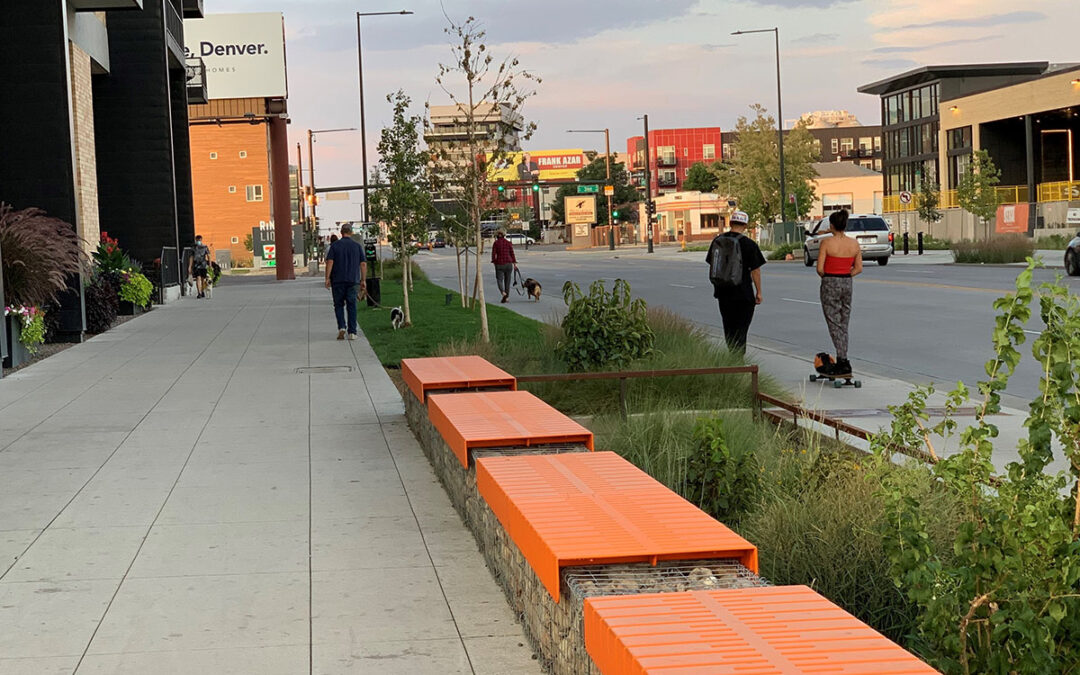We are witnessing in a shift in thinking about public spaces in our cities. The pandemic has highlighted deficiencies and inequities, and demonstrated the importance of parks, open spaces, and streets for socializing, recreation, health, and mobility. Additionally, the experience has been informed by our individual living situation. Some are grateful to have a small yard, or even a balcony. Others walked in the street when the sidewalks were too close for comfort. We also rediscovered the modest joy of a simple picnic in the park or a bike ride with family around our neighborhood. Thanks to policy changes in many cities, we can now enjoy the relief of closed streets for walking and biking in our neighborhoods, and the vitality when they are filled with outdoor eating for restaurants. In ways big and small, we were all reminded how much the public spaces of our cities shape our lives. Why would we ever go back to the old ways?

We have a great opportunity to continue this experiment and redefine our city. We can reappropriate streets into lively public spaces for people, remove historic barriers that promote segregation, and create a connected public realm to address equity, create prosperity, and promote healthy living and social interaction in our cities. Not only is this long overdue, it is also an extremely smart investment. Exploring new methods to fund, build, and maintain our streets, parks, and public spaces to improve performance will only bring long-term value to our cities, neighborhoods, and new development projects.
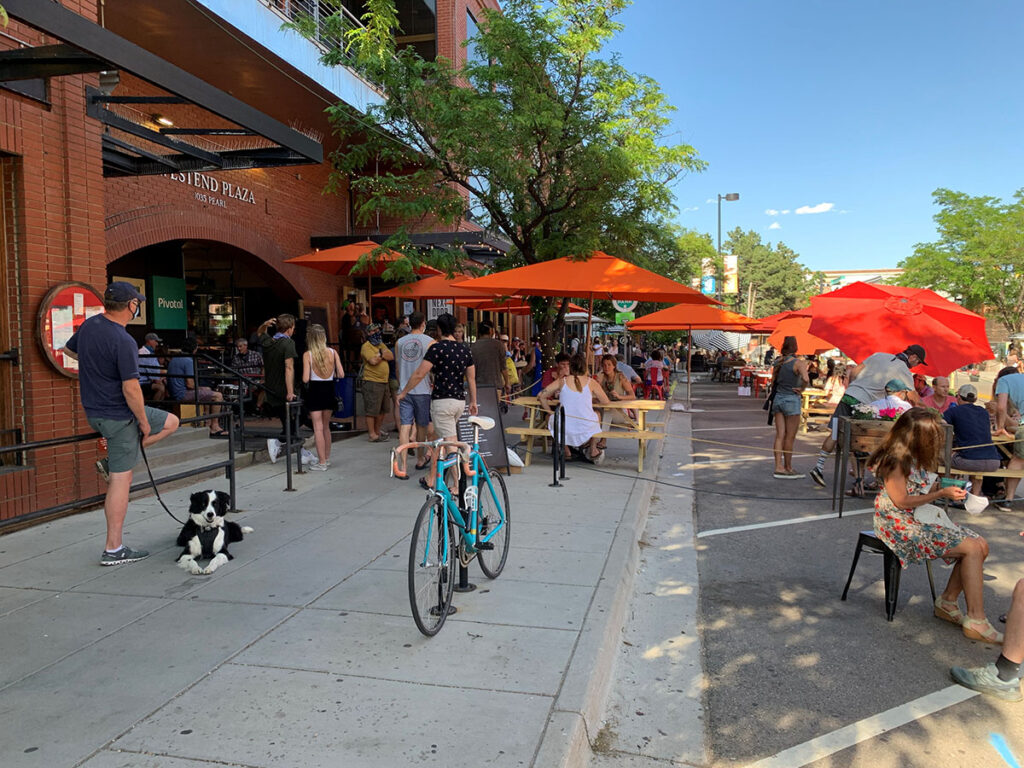
As summer winds down, we hope the creative changes remain, developing lasting changes in our public realm. Livable Cities Studio’s ongoing research and investigation in this area allows us to reflect and share some notes from the front lines. We will spend the next few weeks offering reflections on this underlying shift and exploring trends that embody this opportunity, and we hope you will share your thoughts on how future projects can all seize this opportunity.
We start by looking at the steps being taken to create resilient cities through smart investment in public realm infrastructure that blends mobility, sustainability, art, and placemaking. In the coming weeks, we will also explore new forms of public space activation, integration of local culture in parks and public spaces, and strategies for food and healthy living.
First up, green infrastructure as a generator of new forms of public space.
Green infrastructure is not new – Frederick Law Olmstead first proposed the Back Bay Fens in 1878, and Ian McHarg published Design with Nature in 1969. But after decades out of favor, more integrated forms of infrastructure combining mobility, stormwater, and social spaces is reshaping our public realm. This approach goes beyond the mere preservation of existing natural systems and takes an active role constructing new forms of infrastructure that create more resilient cities while providing new places for people. Recent examples demonstrate how the public realm can function as a sponge to collect and treat stormwater while also creating a stage for people to socialize and gather.
Matt Shawaker’s work on Brighton Boulevard (previous work at Stantec) in Denver is one recent example of a transformed urban corridor and streetscape. The stormwater planters lining Brighton Boulevard reduce the amount of impervious surfaces within the right-of-way, slow the rate of runoff and discharge into the river, and thereby lower pollution levels in the South Platte River. They also provide critical space for new street trees, adding approximately 300 trees to a corridor with historic urban heat island effects. Since construction was completed in 2019, tests of the stormwater planters indicate the system is performing better than expected with plant growth exceeding expectations.
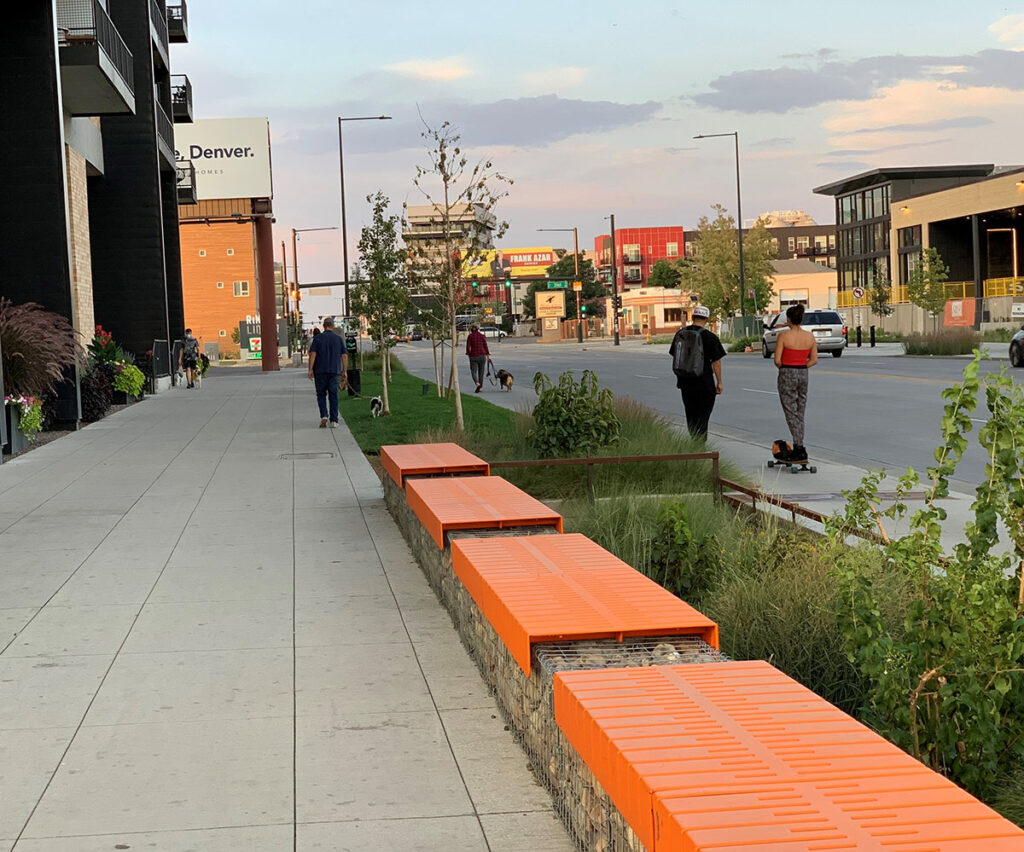
Green infrastructure also creates new design constraints that can stimulate new design solutions and new experiences for users. The location and length of stormwater planters on Brighton Boulevard were driven by the grading profile of the street, resulting in an irregular pattern of planters that made a traditional, repeating pattern of streetscape elements impossible. This necessitated the large-scale linear elements that characterize the streetscape. They also opened new doors to irregular street tree species and spacing which reflect the adjacent riparian corridor and the desired character of the neighborhood expressed by community stakeholders. In turn, the RiNO General Improvement District invested in lighting, street furniture, and wayfinding elements along the street.
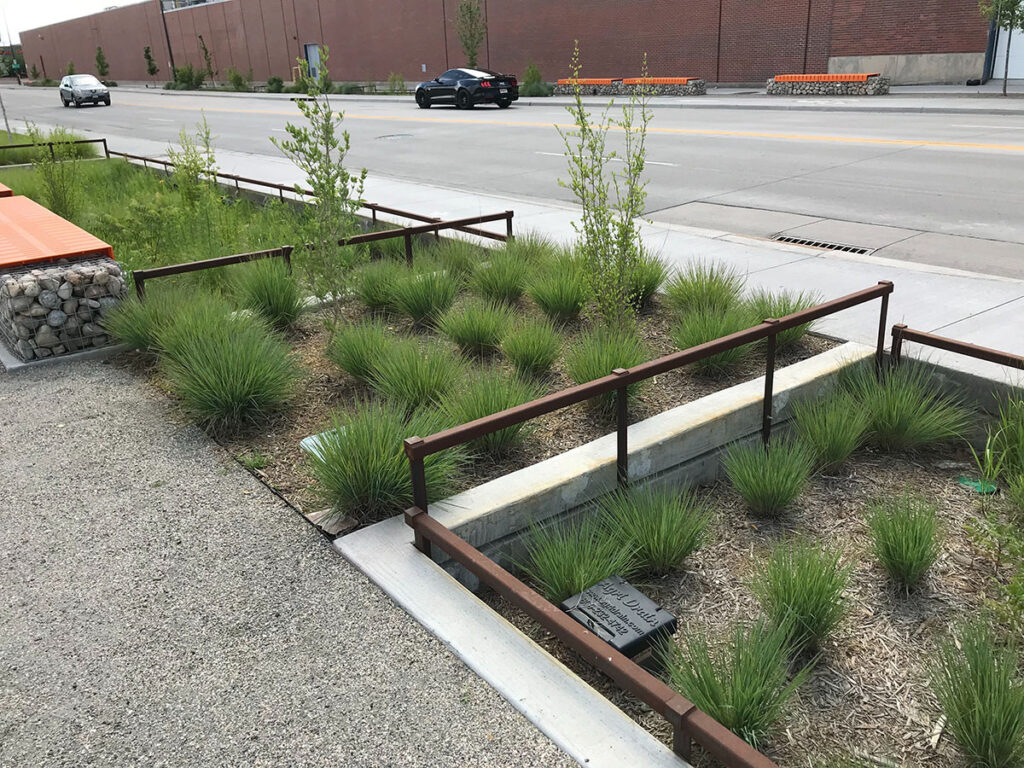
These tangible ecological benefits are critical to health of our natural systems and ourselves. However, integrated infrastructure also offers a more indirect environmental benefit in a deeper connection to place. By using natural processes and making them visible, integrated design bridges the gap between people and their environment and offers opportunities for education. The experience of the soon to be completed Cole-Clayton Greenway will change throughout the year and be shaped by rainfall.
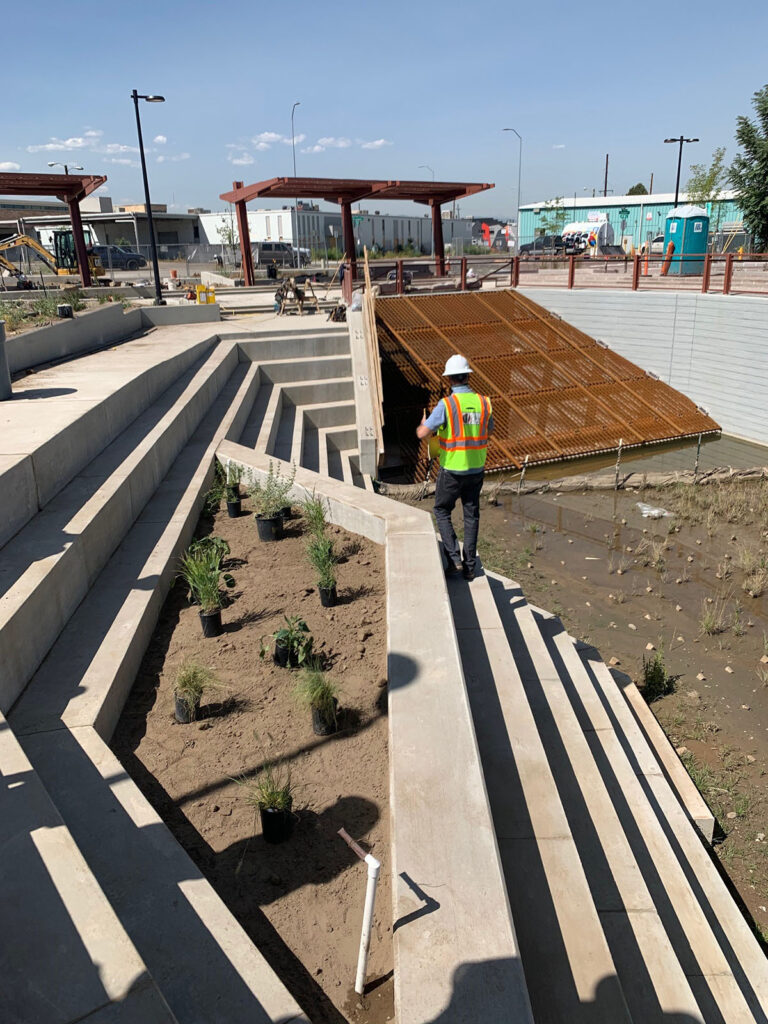
As a part of Denver’s first major green infrastructure project, the greenway sets a precedent for community engagement, flood protection, infrastructure and public space design in an existing neighborhood with predominately low-income and minority residents. The planning and design process put flood protection, infrastructure and community benefits at the forefront of a community conversation to create a new greenway.
The new greenway fulfills community desires through increased connections and new public realm amenities, while working as a waterway to collect and convey stormwater. A Design Work Group, an advisory group made up of community members, attended meetings on a regular basis with the goal of establishing the overall aesthetic approach for the project that celebrated the industrial character and history of the area. The greenway integrates stormwater infrastructure and open space to create a new public realm amenity that provides ecological habitat, reduces urban heat island, and provides new community gathering spaces.
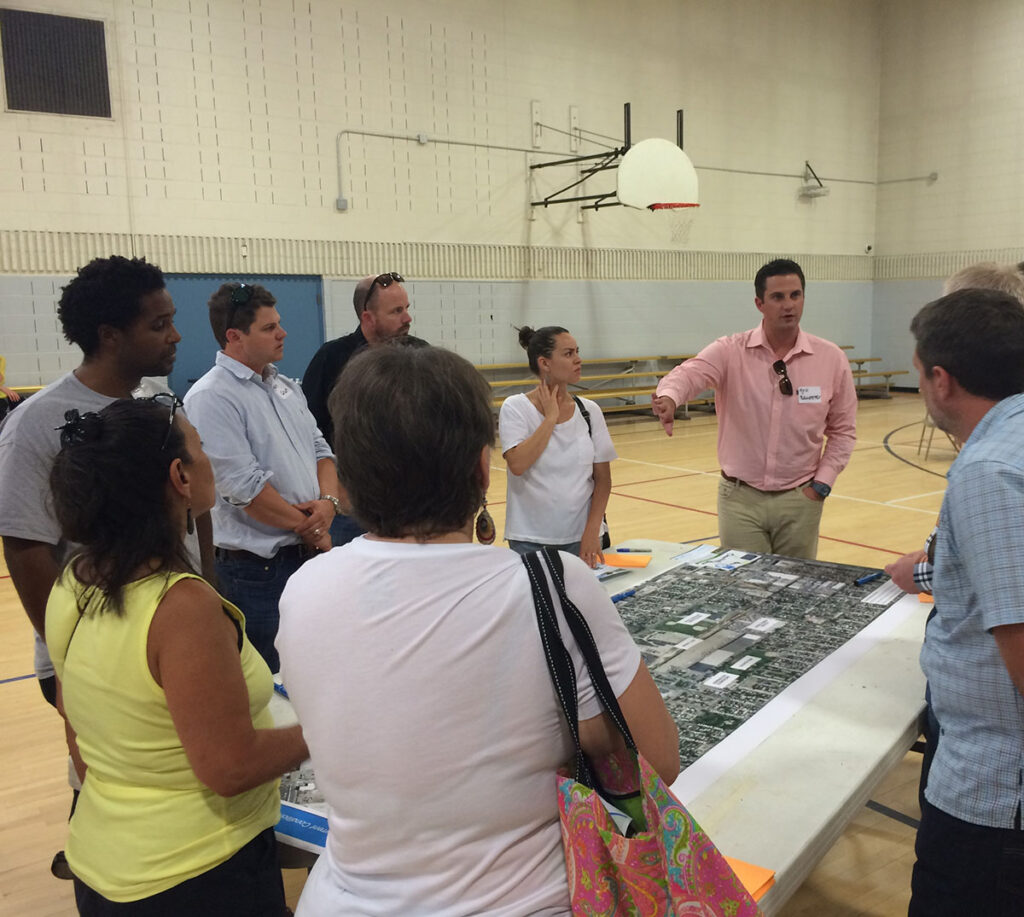
Beyond providing flood protection and establishing an inhabitable stormwater outlet structure – one that can also be used as a public plaza – the project will create new park area and three new nature play areas in underserved communities, add three miles of bicycle and pedestrian facilities, increase open space in Cole and Clayton neighborhoods, and reconnect the urban grid through features like the first shared street in Denver.

As cities continue to grapple with issues of growth, sustainability, equity and affordability, we have an opportunity to collectivity transform our cities by reframing the role of the public realm and shifting from a historic focus on the automobile and functional infrastructure solutions to the new era of healthy living, people, and a vibrant public life. As these examples demonstrate, innovative solutions can generate new forms of public space, promote climate resilience, and improve communities by creating places that celebrate public life and people.
Stay tuned for more thoughts in the coming weeks!

